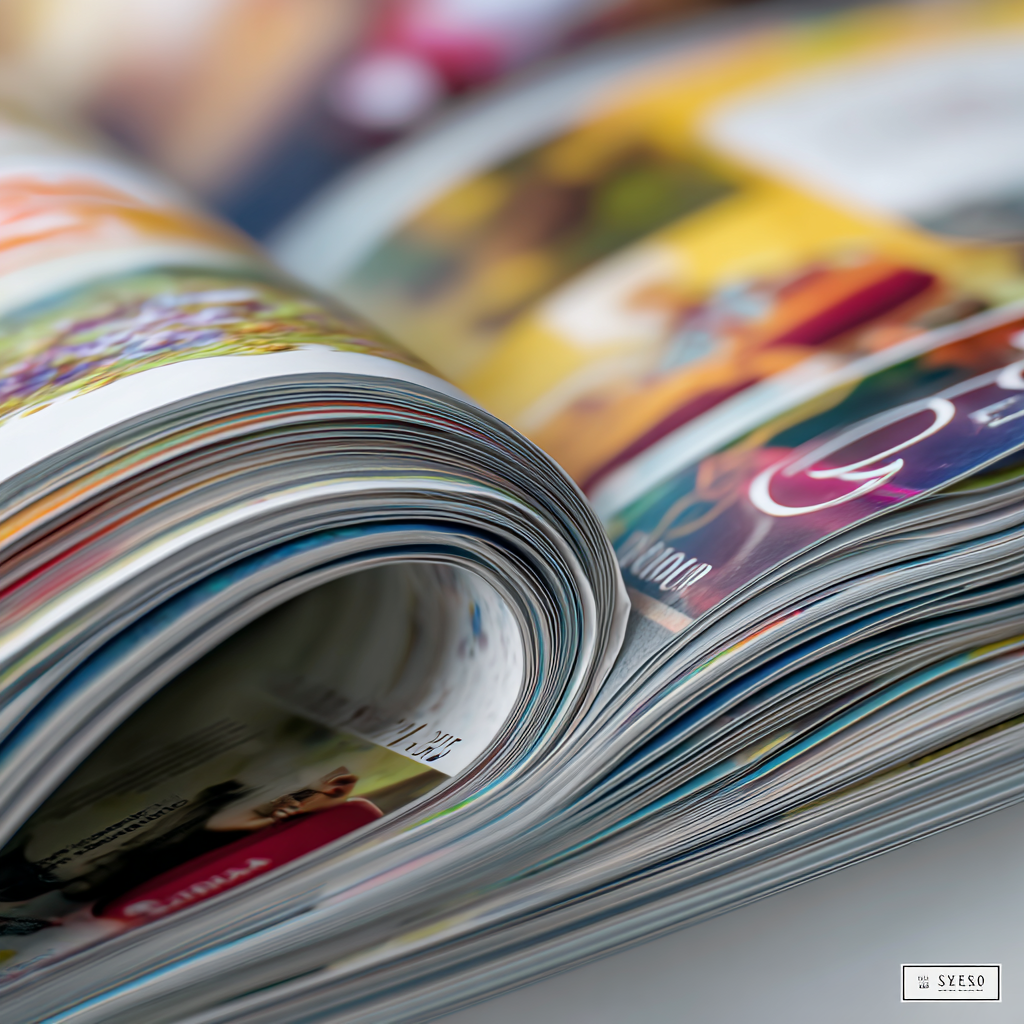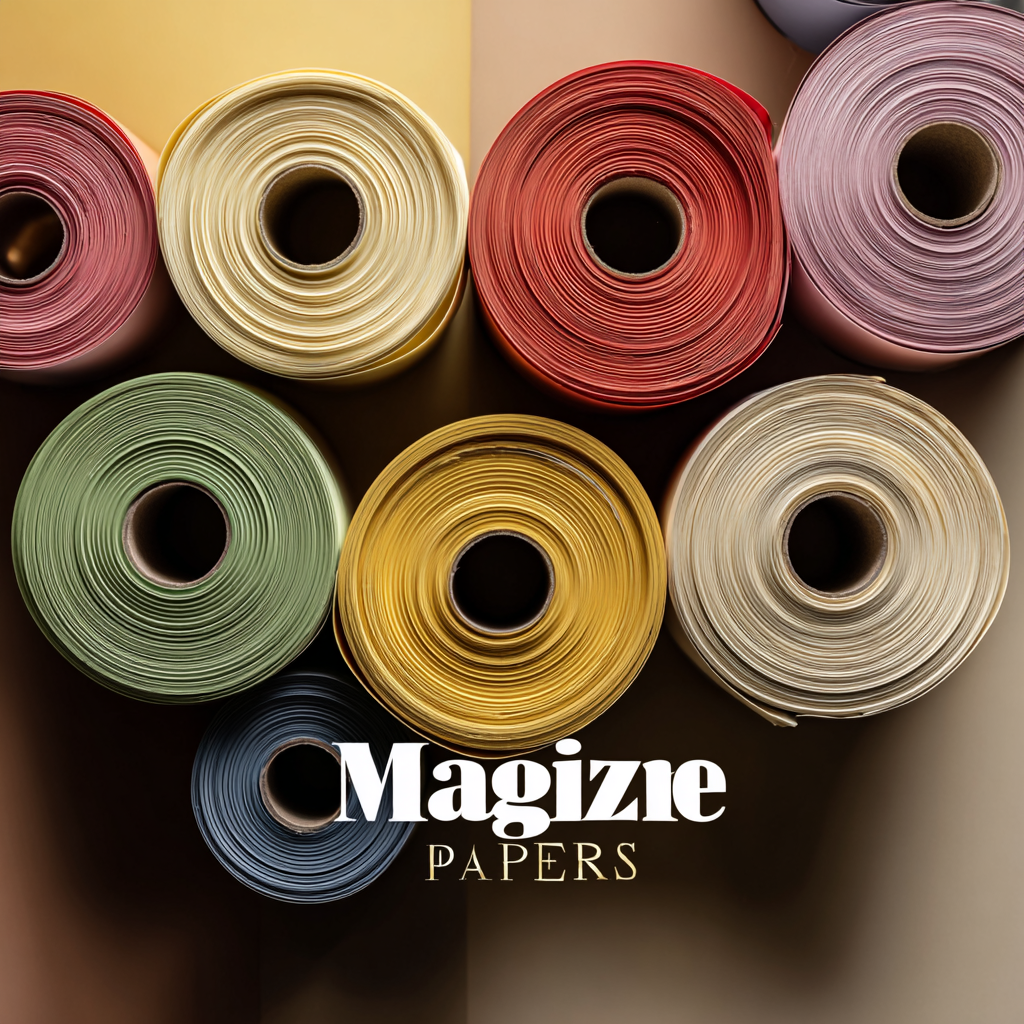In the world of print media, the quality of Magazine Paper plays a pivotal role in capturing the essence of vibrant visuals and engaging narratives. As we explore the intricacies of the best types of Magazine Paper available today, it becomes evident that the focus on quality has never been more pronounced. With China's manufacturing prowess leading the global market, we are witnessing an unparalleled export of superior materials designed specifically for stunning print quality. This blog aims to delve into the top varieties of Magazine Paper that not only enhance the aesthetic appeal of publications but also ensure longevity and durability, ultimately enriching the reader's experience. From glossy to matte finishes, each type has its unique attributes that cater to different creative visions. Join us as we uncover the essential elements that transform ordinary print into extraordinary visual masterpieces.

When it comes to magazine printing, the quality of paper used plays a pivotal role in determining the overall print quality. According to a report by the Print Manufacturers Association, 60% of readers notice print quality, which significantly affects their perception of the magazine's value. High-quality paper not only enhances the physical appearance of images and text but also influences durability and tactile experience. In fact, studies show that magazines printed on glossy or coated paper can increase reader engagement by 30% compared to those on standard uncoated stock.
Moreover, the choice of paper type can ultimately impact production costs and sustainability. Research from the Paper and Packaging Board indicates that while high-quality paper may come at a premium, the return on investment is substantial; magazines with superior print quality have been shown to achieve a 25% higher subscription rate. As the industry moves towards eco-friendlier options, selecting recycled or sustainable papers can also draw in environmentally conscious consumers, thereby broadening market appeal. High-quality paper is not merely an expense but an investment in a magazine's success.
When it comes to achieving optimal print resolution for magazine publications, the choice of paper plays a pivotal role. Different types of magazine paper can significantly influence color intensity, image clarity, and overall aesthetic appeal. According to a report from the Paper and Paperboard Packaging Environmental Council, coated papers, such as gloss and silk finishes, are often preferred for magazines aimed at high-quality visuals. These coated options can enhance the vibrancy of images, yielding up to 40% better color reproduction compared to uncoated alternatives.
Additionally, Beyond the aesthetic benefits, the weight and thickness of magazine paper also matter. Industry standards suggest that a weight of 80-100 lb cover stock provides the ideal durability and stiffness, helping to maintain the magazine’s shape while still allowing for a flexible flip through. A survey conducted by the International Paper Association revealed that magazines printed on heavier stock tend to have a perceived higher quality, with readers rating them 30% more favorably than those on lighter paper. This data reinforces the importance of selecting the right paper type to not only capture attention but also retain it through tactile experience.
When it comes to magazine printing, the choice between coated and uncoated paper can significantly impact the final product's visual appeal and tactile quality. Coated paper, often glossy or satin-finished, is designed to enhance color vibrancy and provide a smooth surface that reflects light beautifully. This type of paper is ideal for publications that rely heavily on photography and illustrations, as it can make images pop and look more dynamic. The coating also helps with ink absorption, reducing bleed and ensuring crisp, clean lines, which is essential for high-quality prints.
On the other hand, uncoated paper offers a different set of advantages, particularly for magazines that feature a more natural or textured aesthetic. With its porous surface, uncoated paper provides excellent ink adhesion and a more muted appearance, making it suitable for publications that emphasize typography or minimalistic designs. This type of paper can also convey a sense of authenticity and craftsmanship, appealing to readers who appreciate the tactile experience of flipping through pages. When deciding between the two, consider your magazine's content and target audience to select the paper type that best aligns with your vision.

When selecting the right paper for your magazine, several key factors can significantly impact the print quality and overall feel of your publication. One crucial aspect to consider is the paper weight. According to a study by the Printing Industries of America, heavier paper typically offers better durability and a more premium look, enhancing the reader's experience. While standard magazine paper often ranges from 70 to 100 gsm (grams per square meter), opting for a heavier stock, such as 110 gsm, can elevate the perceived quality of your magazine.
Another important consideration is the coating of the paper. Glossy finishes tend to make colors appear more vibrant and photos more striking, making them ideal for lifestyle and fashion magazines. A report from the Paper and Packaging Board indicates that magazines printed on coated paper have a 30% longer shelf life due to their resistance to wear and tear compared to uncoated sheets. Conversely, uncoated paper may provide a more tactile experience, favoring readers who appreciate a natural feel. Ultimately, the choice between glossy and uncoated paper depends on your magazine's brand identity and target audience, emphasizing the necessity to align paper selection with content presentation.
When selecting magazine paper, enhancing visual appeal is crucial for making a lasting impression on readers. According to a recent report by Smithers Pira, the global market for coated fine paper is projected to reach $5.8 billion by 2025, indicating a strong preference for high-quality materials that yield stunning print results. Choosing the right type of paper not only elevates the aesthetic quality of your publication but also affects its tactile experience, influencing reader engagement.
Tip 1: Opt for glossy or satin finishes for vibrant imagery. Glossy papers are known to enhance color brilliance and sharpness, making them ideal for fashion and lifestyle magazines where visuals play a pivotal role. A study published in the Journal of Printing Science and Technology highlights that gloss papers can increase perceived print quality by up to 30%, making them a compelling choice.
Tip 2: Consider weight and opacity. The thickness of magazine paper, often referred to in GSM (grams per square meter), influences durability and opacity. Choosing a heavier paper (around 150-250 GSM) not only conveys a sense of quality but also prevents show-through, ensuring a premium look and feel. Insights from the Paper and Packaging Consumer Trends Report show that consumers prefer magazines that feel more substantial, as this correlates with perceived value and brand integrity.

